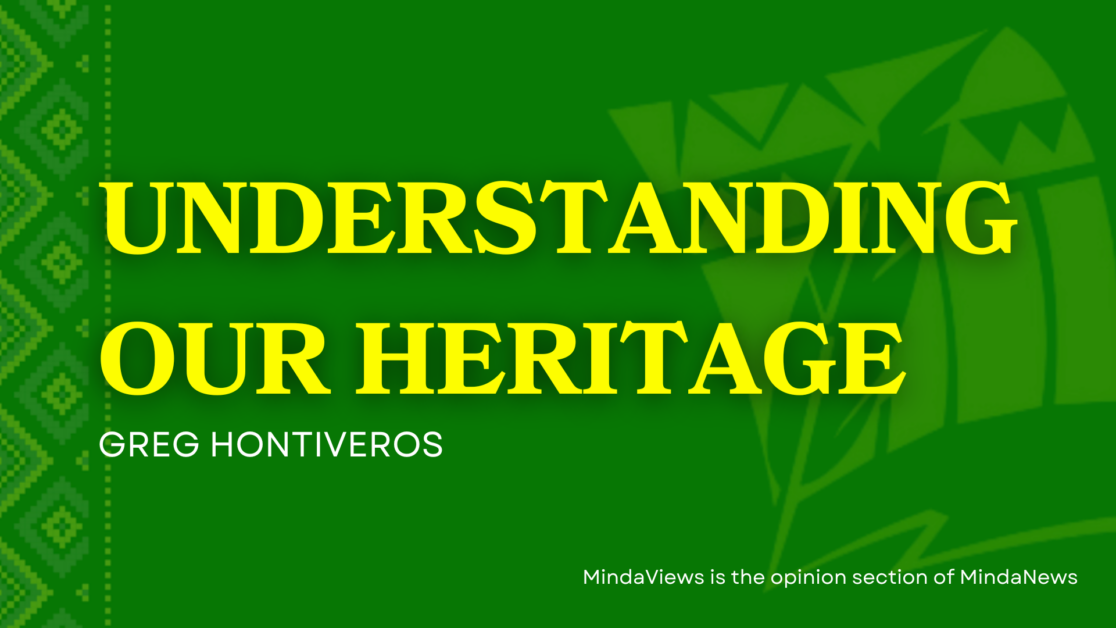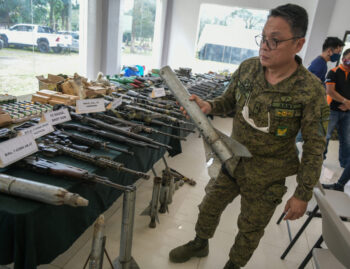
UNDERSTANDING OUR HERITAGE
The Earliest Recorded Trade Mission to the Chinese Empire from the Philippine Islands
1st of a series
Starting in 1975, there was a flurry of archaeological discoveries in Butuan. It was unprecedented in the Philippines that a huge volume of Oriental ceramics, gold ornaments, and remnants of pre-colonial boats were uncovered in this vast riverine delta. People were perplexed by these discoveries as scarcely little was ever mentioned about them in the standard history textbooks nor was anything ever referred to it by oral history in the people’s collective memory.
William Henry Scott, an American missionary who has specialized in our country’s pre-colonial history, once asked whether there were written references about the Philippine islands before the Spanish entry. He surmised rightly that if there was any record, it could only be from the Chinese empire as it kept an archive of imperial records in every ruling dynasty, and these were varied, from official records kept by scribes on visiting dignitaries from distant lands to accounts by traders, Buddhist pilgrims, and adventurers about exotic peoples and places beyond the borders of the empire. Given his academic training in Mandarin, his labors resulted in the slim volume titled “Filipinos in China Before 1500.”
Two imperial dynasties in China spurred trade with the external realms far beyond what other dynasties have ever accomplished: the Sung Dynasty (960-1279 AD) and the Ming Dynasty (1368-1644 AD). Some 90% of the Oriental ceramics recovered in Butuan and neighboring places were Sung pieces, and throughout the rest of the country, most ceramic items were of the Ming period. One can thus notice the ebb and flow of the trading pattern and the rise of other principal harbors by the volume of trade ceramics, although there are other factors that have to be taken into account.
Interestingly, the two best known trade/tribute missions were from Mindanao, attesting to the strategic role played by the island during the pre-colonial period. We shall focus on the earliest recorded trade/tribute mission found in the Sung Annals: Butuan. The Butuan missions (1003-1011 AD) preceded the celebrated Sulu missions (1417-1424 AD) by 413 years.
Even before the trade missions to China, Butuan had already made inroads to other Asian kingdoms thru its gold industry. Whatever went to China at this time was funneled thru the kingdom of Champa along the central coastline of present-day Vietnam, which served as the former’s “middleman” for trade goods from Southeast Asia. Butuan’s main purpose then for its trade mission to China was to have a more lucrative direct trading relationship, thus eschewing
the trading channel thru Champa. The available trade items from Butuan were gold, beeswax and civet.
Volume 197 in the Sung Hui Yao Kao annals described Butuan as “in the sea. It has had mutual relations with Champa, but not much communication with China.” In October 1003, the Butuan king, Ch’i-ling, sent two of his emissaries, Li-i-han and Chia-mi-nan, to the imperial court. By February 1004, the emperor summoned the Butuan visitors to attend the New Year festival where they witnessed the display of lanterns and partook of the feast. The emperor gifted them with strings of cash. In April 1004, Li-i-han and his companions finally presented their native products and red parrots. It appeared afterwards that the Butuan envoys broke some rules, as one official complained, by hastily engaging in trading and making private contracts. Moreover, they secured flags and pennants which ought to be given based on a certain hierarchy. The official imposed new restrictions on trading directly in the market and the making of private contracts.
In July or August 1007, the Butuan king, Ch’i-ling sent another embassy led by I-hsu-han. They presented goods like tortoise shell, camphor, tai-branches, cloves, mother-of-cloves, and other native products. In turn, the emperor gifted them with caps, belts and robes, dishes and presents, and strings of cash. They were also provided an escort. But a month later, this upstart envoy petitioned the court that inasmuch as the Champa envoy received two horses with adornments and two large flags, he expected the same treatment. But the official complained that he was beneath Champa. Doing otherwise would be a departure from the time-honored protocol. The Butuan envoy was given five small vari-colored flags instead.
In March 1011, the new Butuan ruler with a Hindu title, Hsi-li-pa-ta-hsia-chi’ih (Sri Bata Shaja, a throwback to the Hindu-Buddhist cultural influence) sent his envoy, Li-kan-hsieh, bearing a memorial engraved on a tablet of gold, and presents of cloves, white Barros camphor, tortoise shell, and two red parrots as tribute. As they came during the sacrifice to the earth god, Fen-yin, they also presented a slave, but the emperor took pity on her as she was in a strange unfamiliar place, and sent her back to the envoys. This was a time also when other envoys came, like those from San-ma-lan, Wu-hsun, and P’o-p’u-lo. The latter two were islands in the sea. It seemed San-ma-lan was a large country as its tributes were aromatics, elephant tusks, dates, almonds, 5-flavored seeds, rose water, fine-grained white sugar, cloudy glass bottles, and saddles. This time, the Butuan embassy finally succeeded as Li-kan-hsieh was granted the title of Cherished Transformed General, together with the San-ma-lan envoy who was granted the title of Gracious-to-Strangers General, and of P’o-p’u-lo whose title was Honored Skillful General. All were given favors, and the Butuan envoy finally presented his gold memorial, and was given flags, pennons, and armor, to honor his distant land. A direct trading status opened the way for the Butuan products.
Here’s an outstanding example of archaeological discoveries coinciding with an archival document in China. It is now easier to grasp the significance of the Sung ceramics found aplenty in Butuan and the gold industry that underpinned its early rise as an ancient trading harbor.
(Greg Hontiveros of Butuan City is an independent researcher on historical studies. Hontiveros has two published books and a dozen papers published in the Journal of History and some university journals. His focus is on aspects of Mindanao history and culture).
References:
W.H. Scott, Filipinos in China Before 1500, (1989)
G. Hontiveros, Butuan of a Thousand Years, (2004)







